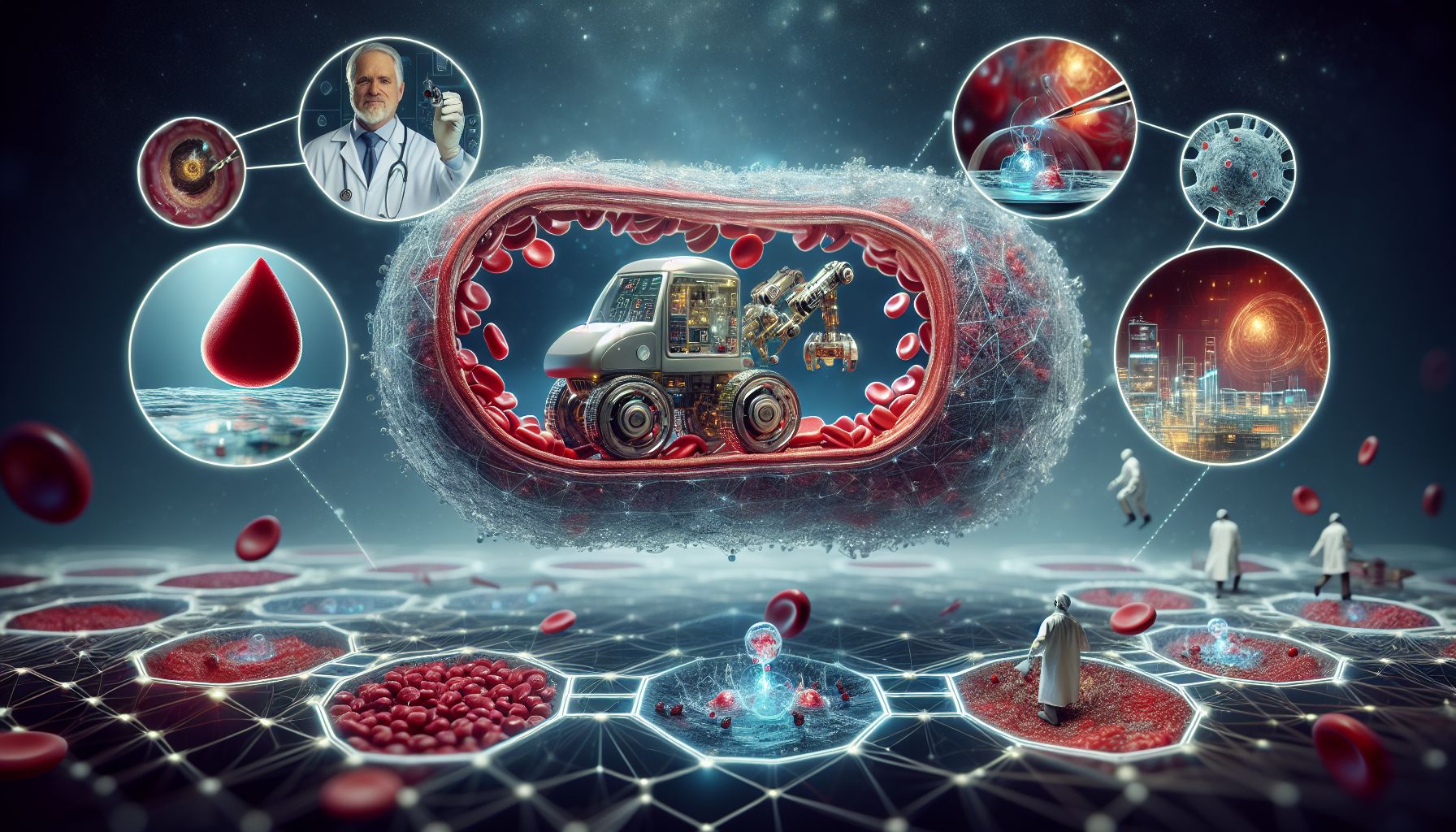📌 Let’s explore the topic in depth and see what insights we can uncover.
⚡ Imagine a world where surgeons operate using tools smaller than a human hair, and drugs are delivered directly to diseased cells—welcome to the astonishing world of nanotechnology in medicine!
Imagine a world where diseases could be caught and treated at their earliest stages, even before symptoms appear. A world where the human body could regenerate damaged tissues and organs. A world where targeted delivery of drugs could be done with surgical precision, reducing side effects and improving efficacy. 🔍 Interestingly, not a plot for a science fiction novel, but a glimpse into the future of medicine and bioengineering made possible by nanotechnology. The power of nanotech’s miniaturized world is changing the landscape of healthcare, making what was once thought of as science fiction a reality. The infinitesimal world of nanotechnology - the science of manipulating matter at the atomic and molecular scale - is making waves in many sectors, but its impact on medicine and bioengineering is particularly profound. This blog post explores the transformative power of nanotechnology in these fields, diving deep into its current applications and potential future developments.
💡 Understanding Nanotechnology

"Revolutionizing Medicine: Nanotechnology's Mighty Micro Impact"
Nanotechnology involves the manipulation of particles that are 1 to 100 nanometers in size. For perspective, a human hair is about 80,000 nanometers wide. This minuscule scale allows scientists to design and construct new materials and devices with enhanced or entirely new properties. The key to nanotechnology’s transformative power lies in the unique properties of nanoparticles. At the nanoscale, the physical, chemical, and biological properties of materials differ significantly from their properties at a larger scale. These unique properties have opened up new avenues in medicine and bioengineering, providing solutions to some of the most pressing healthcare challenges.
🎯 Nanotechnology in Medicine: Targeting Diseases with Precision
One of the most promising applications of nanotechnology in medicine is in drug delivery. Traditional drug delivery methods often involve sending the drug throughout the body, not just the disease site, leading to unwanted side effects. Nano-drug delivery systems, on the other hand, can deliver drugs directly to the diseased cells, improving the efficacy of the treatment and reducing side effects. For instance, in cancer treatment, nanoparticles can be engineered to carry anti-cancer drugs and deliver them directly to the tumor cells, leaving the healthy cells untouched. This targeted approach can significantly improve the effectiveness of the treatment, reduce the required dose, and minimize side effects. Moreover, nanoparticles can be designed to release drugs in response to specific stimuli, such as changes in pH or temperature, or the presence of specific enzymes or proteins, providing a high level of control over drug release.
🕵️♂️ Nanotechnology in Diagnostics: Detecting Diseases at an Early Stage
Nanotechnology is not only changing how we treat diseases but also how we detect them. Nanobiosensors, tiny devices that can detect biological molecules, are being developed to diagnose diseases at an early stage, even before symptoms appear. For example, nanobiosensors can be used to detect biomarkers for cancer in the blood, potentially catching cancer in its early stages when it is more treatable. Similarly, nanoparticles can be used to enhance the contrast in medical imaging techniques, such as MRI and CT scans, improving the detection of diseases and abnormalities.
🔧 Nanotechnology in Bioengineering: Building Better Biomaterials
Nanotechnology is also revolutionizing the field of bioengineering. By manipulating materials at the nanoscale, scientists can create biomaterials with superior properties, such as increased strength, improved biocompatibility, or enhanced ability to promote cell growth and tissue regeneration. For instance, nanofibers can be used to create scaffolds for tissue engineering, mimicking the natural environment of cells and promoting tissue growth. These scaffolds can be used to regenerate damaged tissues or organs, potentially providing a solution to the shortage of organ donors. Moreover, nanoparticles can be used to create nano-coatings for medical devices, such as implants or prosthetics. These nano-coatings can enhance the functionality of the device, improve its integration with the body, or provide it with antimicrobial properties.
🧭 Conclusion
Nanotechnology is ushering in a new era in medicine and bioengineering, transforming how we diagnose, treat, and prevent diseases. By manipulating matter at the nanoscale, scientists are crafting solutions to some of the most pressing healthcare challenges, from targeted drug delivery to early disease detection, tissue regeneration, and improved biomaterials. Yet, the power of nanotechnology is only beginning to be unlocked. As our understanding of the nanoscale world deepens, and as new nanotech tools and techniques continue to be developed, the impact of nanotechnology on medicine and bioengineering is set to grow even further. The day is not far when we will have nanobots swimming in our bloodstream, repairing damaged cells, and keeping us healthy. The age of nanotech is upon us, and it’s time we embrace it.
Remember, the future of medicine and bioengineering is not just big, it’s nano! 📎
🌐 Thanks for reading — more tech trends coming soon!
